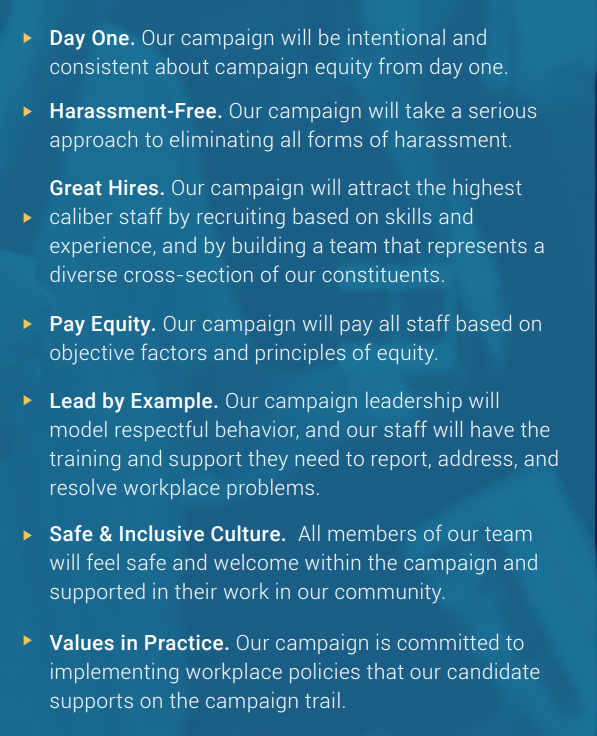How to Build an IDEAL Campaign Workplace – So You Can Win with Integrity
We are just two weeks out from Election Day, and campaigns everywhere are in the final stages of getting out the vote. It’s an intense time for campaign managers and their staff, who are working almost around the clock to bring their candidate successfully across the finish line.
How these last couple weeks play out could depend a lot on campaign equity, and how much a campaign values and supports the people they hired months ago to carry them to victory. On those campaigns where leadership has focused from the start on building a strong and inclusive culture — and aligning their workplace practices with the values they are fighting for on the trail — that final push can be a time of solidarity and dedication. But where leaders have enabled or ignored a toxic work culture, or simply neglected to establish the basic operational practices necessary to a functioning workplace, the strain of going all out to win can be a breaking point.
This is what we have learned in our work this cycle advising political campaigns and advocacy organizations: a commitment to campaign equity is a critical component of a winning strategy. Hiring and empowering a diverse staff can generate more innovative tactics and better advice on reaching all voters. Ensuring equity in your pay and practices can simplify your operation and increase staff dedication. An inclusive culture sustains the people power you will need to carry you through the constant challenges of a campaign environment.
But even more importantly, these approaches can help you win with integrity. If you are a progressive candidate, or a leader on a progressive campaign, it is not enough to fight for good policies and to champion racial and gender justice in public. You also need to make sure your own house is in order, and that you have the policies and practices that ensure the safety of your staff and volunteers and promote equity and inclusion in all your in-person and remote workspaces.
We put all of these ideas together in a #CampaignEquity Handbook. This resource for campaign professionals includes strategy checklists, sample policies and plenty of links to the research and experience that backs them up as best practices. It includes advice on building a harassment-free workplace, staffed by great hires and sustained by fair pay and a safe and inclusive culture.
When campaign leadership comes together after Election Day to understand what worked and what didn’t – the factors that carried them to victory and should inform their transition plans – we hope this can inform those conversations. And as the next cycle begins, we believe this will be an essential resource.
Campaigns are workplaces too. Let’s put an end to the myth that overwork and toxic work environments just go with the territory and that diversity, equity and inclusion are just the extras you hope to get to at some point. Investing in #CampaignEquity can increase your chances of winning, and of doing it based on the values that brought you to this work in the first place.
DOWNLOAD THE TOOLKIT (PDF)
Working IDEAL provides trusted and innovative advice on inclusive workplaces, diverse talent, and fair pay. Contact us to learn more about the services we offer.
Authors: Pam Coukos and Peach Soltis

